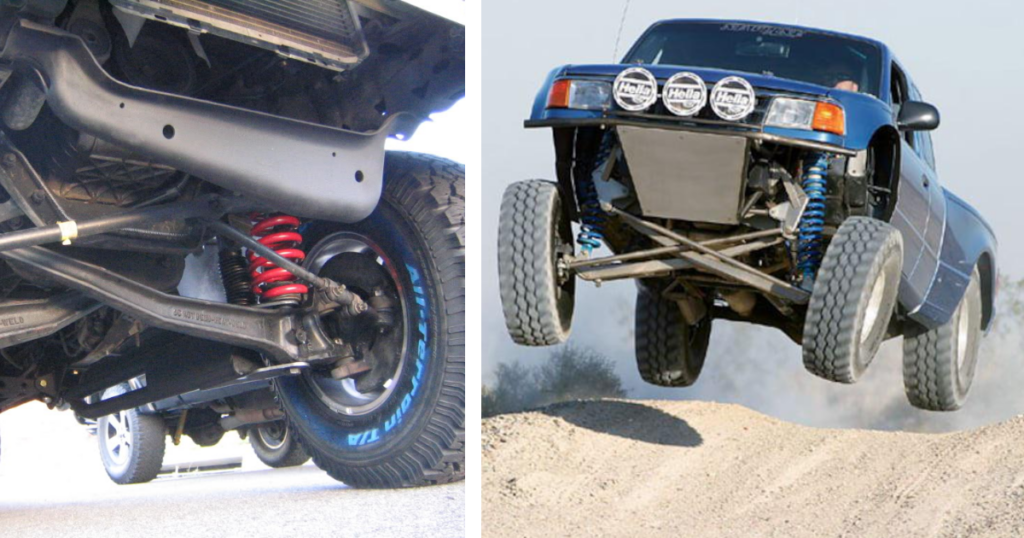
Naturally, the concept was not new when Ford introduced their Twin I-Beam front suspension for light vehicles in 1965. Front ends with swing axles had been around for a very long time. For instance, by dividing the beam axle in half and inserting pivots in the middle, British engineer Leslie Ballamy (1903–1991) produced an affordable IFS conversion for the Austin 7 and Ford light automobiles in 1933 (above). The arrangement was light, inexpensive, straightforward, and long-lasting despite a few flaws, such as an unfavorable camber shift in the roll. It also completed the task on other British sports vehicles, including Allard and Lotus 11.
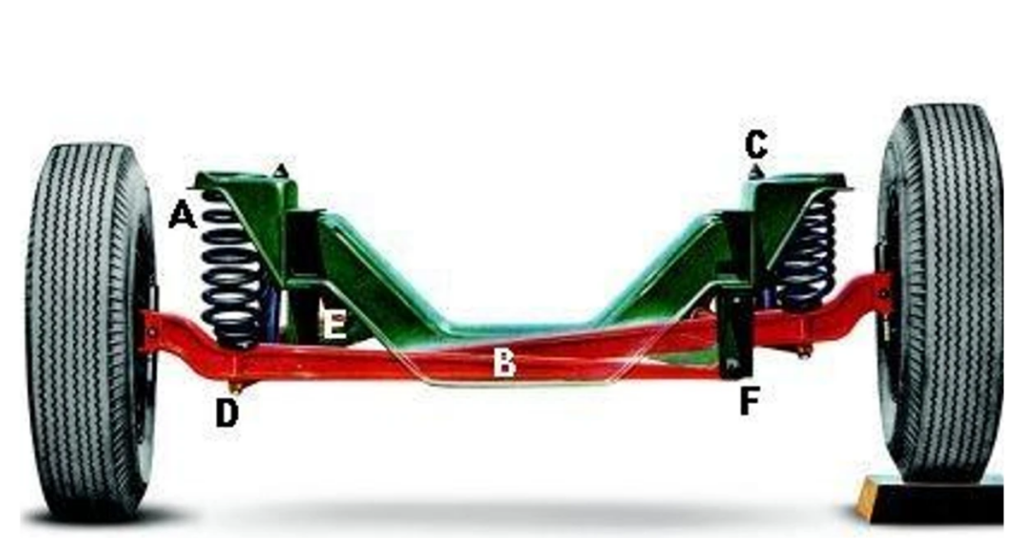
Ford’s truck Twin I-Beam front end had a unique kind of swing axle. Here, the geometry was improved by the axles being offset and overlapped. Each beam was roughly 36 inches long and made of a hefty chrome-moly steel forging, similar to a traditional straight axle. This allowed the suspension to adjust its range of motion while minimizing the camber shift at the wheel.
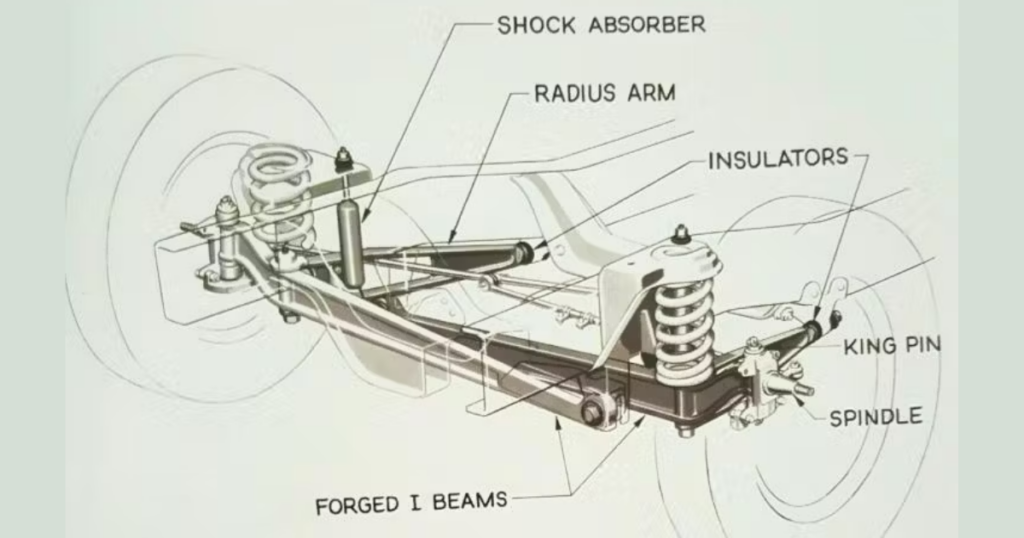
Additionally, there were two radius arms (also made of massive steel forgings) in place of the standard truck axle’s two leaf springs, which would have provided longitudinal positioning and supported the steering and braking loads. With the braking and steering loads released, the coil springs can have a lower rate, resulting in a more comfortable and soft ride and more agile handling. In 1965, the F-100 through F-350 models got Twin I-Beam, while the bigger trucks kept using traditional beam axles.
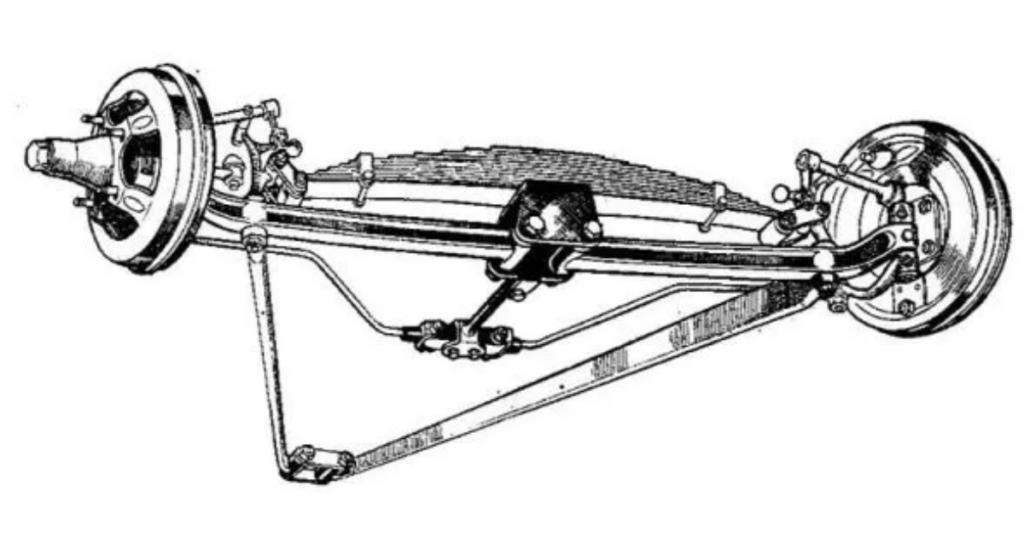
Light trucks have been perfectly happy with a straightforward straight axle and leaf springs for many years. Why is independent front suspension necessary for a pickup? For the same better ride and handling that led passenger automobiles to adopt it a few decades earlier. (Check out these and these features on IFS history.) Since many owners were utilizing their pickups for daily transportation by the early 1960s, passenger-car comfort could be a potent selling point. The ad writers said, “You’ve never ridden in any pickup as comfortable—yet as rugged—as the ’65 Ford.”
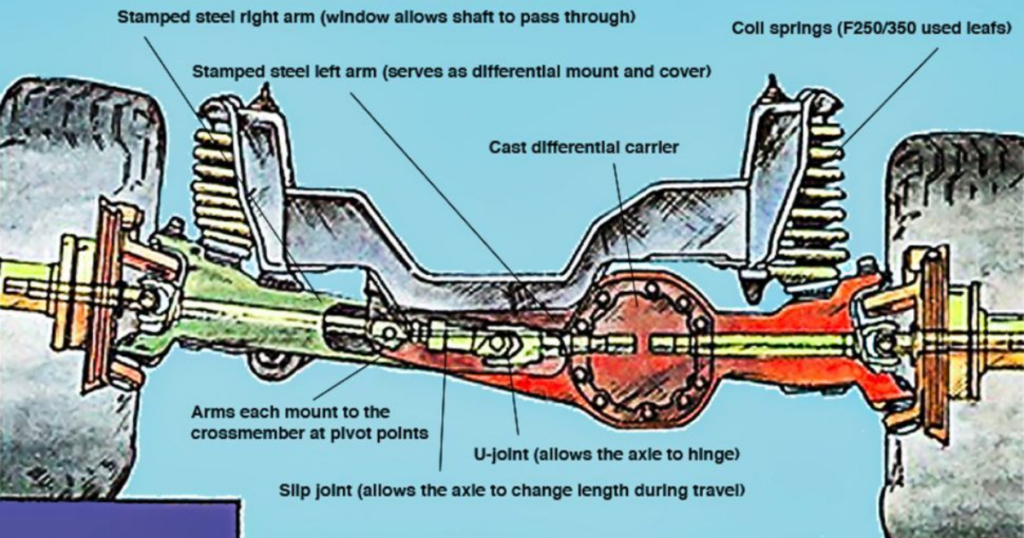
Over time, the arrangement was continuously improved, and ball joints finally took the place of the conventional kingpin steering knuckles. Ford modified the design for four-wheel drive in 1980. The system, known as the Twin-Traction Beam, or TTB (above), used drive hardware from Dana and two steel housings in place of the forged I-Beams.
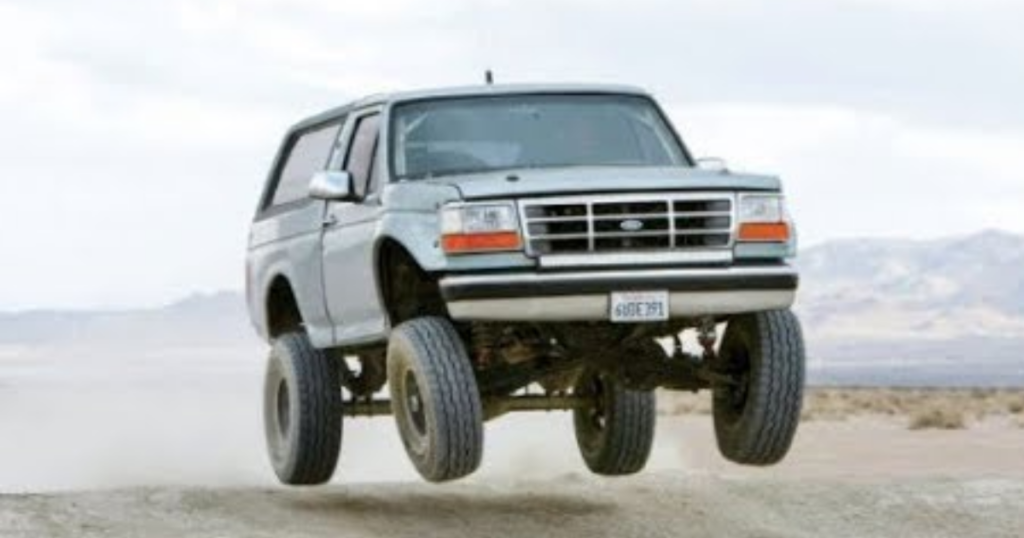
To cut a long tale short, Ford aimed to merge the excellent dynamics of independent suspension with the toughness of a beam axle in the Twin I-Beam. Over zillions of kilometers and millions of automobiles, the system has proven itself, even though its novel characteristics have caused some confusion for mechanics over the years. Even now, Ford’s Super Duty F-250 and F-350 trucks use a Twin I-Beam front suspension system.




